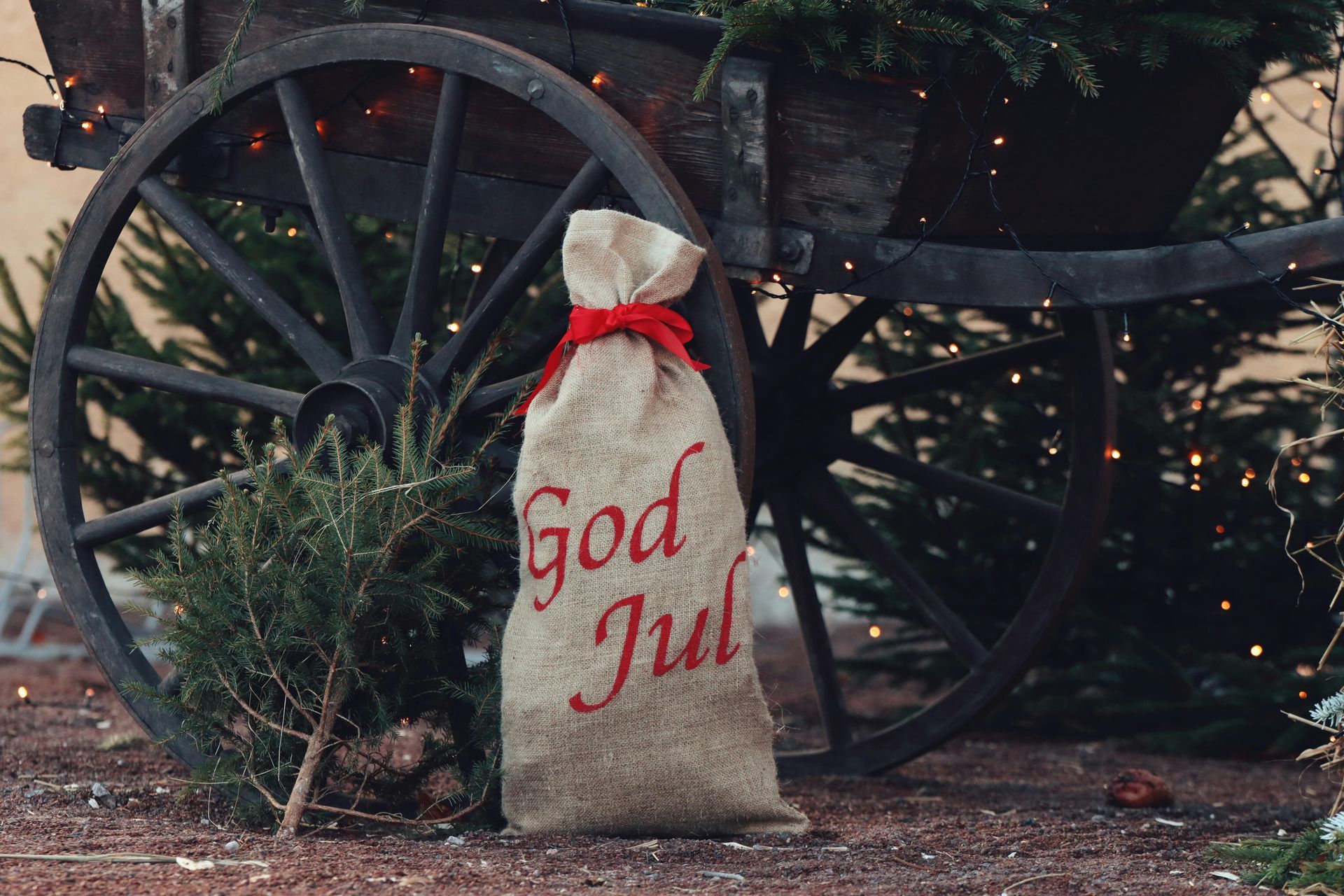Sweden in December
A timeline of everything traditional that happens in Sweden during December

December in Sweden is filled with many traditions:
December 13: Lucia Day
Lucia Day, or St. Lucia's Day, is celebrated on December 13th and marks the beginning of the Christmas season in Sweden.
This day honors St. Lucia, a Christian martyr who symbolizes light.
The celebration involves a procession led by a girl dressed as Lucia, wearing a white gown and a crown of candles symbolizing the arrival of light during the dark winter period.
She is followed by attendants, also in white, singing traditional songs.
The atmosphere is serene and filled with the scent of saffron buns (lussekatter) and ginger biscuits.
Advent Sundays
The four Sundays leading up to Christmas are known as Advent Sundays.
Each Sunday, a new candle is lit on the Advent wreath, symbolizing the countdown to Christmas. Everyone gather to enjoy fika (a coffee break with sweet treats), often featuring lussekatter and gingerbread cookies.
Time for cozy gatherings and preparing for the festive season.
December 24: Julafton (Christmas Eve)
Christmas Eve, or Julafton, is the main day of celebration in Sweden.
The day starts with families gathering to watch the traditional Disney Christmas special, "Kalle Anka och hans vänner önskar God Jul" (Donald Duck and His Friends Wish You a Merry Christmas), which has been a beloved tradition since 1959.
After the show (or before the show), the festive meal, known as Julbord, is served.
This buffet includes a variety of dishes such as Christmas ham, meatballs, pickled herring, and Janssons frestelse (a creamy potato and anchovy casserole).
The evening concludes with the arrival of Jultomten (Santa Claus), who delivers gifts to children.
December 25: Christmas Day
While Christmas Eve is the main event, Christmas Day is a more relaxed affair. Families often spend the day enjoying leftovers from the Julbord, playing games, and spending quality time together. It's a day of rest after the excitement of Julafton.
December 31: New Year's Eve
New Year's Eve, or Nyårsafton, is celebrated with friends rather than family.
The evening typically begins with a special meal, often featuring luxurious dishes like lobster and champagne.
As midnight approaches, people gather to watch fireworks and ring in the New Year.
One unique Swedish tradition is watching "Grevinnan och betjänten" (Dinner for One), a short comedy sketch that has been broadcast on Swedish television every New Year's Eve since 1980.
Beyond food and celebration traditions, there are notable differences in decorating styles.
Candles and light decorations are a big part of Swedish Christmas tradition because, in the Stockholm area, there are only five to six hours of daylight during the winter months, unlike the summer months when there are up to 18 hours of daylight.
It is common to use a lot of lights and lamps, especially on windows. Window lights, light garlands, and Christmas lights create a warm and bright atmosphere. All those window lights and fairy lights that illuminate Sweden during these dark winter months create a fairy-tale atmosphere.
The Swedish Christmas interior has won me over with its minimalist charm and natural materials.
Decorations use materials such as wood and linen, and the colors are more subtle and neutral.
Interestingly, in Sweden, gifts are opened on Julafton, Christmas Eve, December 24th. This is the day when families gather and people congratulate each other.
Swedish celebrations are subtly toned and typically Scandinavian. If you're hoping to celebrate New Year's Eve in grand style on the streets of Stockholm, you might be a bit disappointed. There are no bands or loud music, just a simple yet beautiful firework display at midnight.
It's a more quiet, reflective way to welcome the New Year, perfectly in line with the simplicity that defines Swedish culture.



